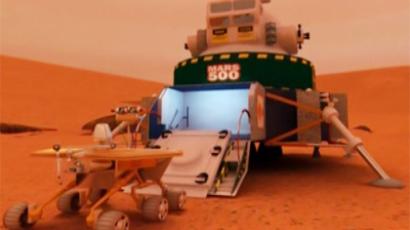The unreal reality of the Red Planet
Members of the Mars 500 experiment who spent 17 months shut away from the world are enjoying their first few days “back on Earth”. Romain Charles told RT what it was like to spend a year and a half in a confined space, simulating space flight.
“I feel great seeing the normal world again – it is just so different, I am rediscovering everything,” he said.
He also pointed out that the world has changed greatly in the year and a half that the crew spent in isolation.
“But nevertheless it feels good that I can see the sun rising. It is a small thing which is normal for most people every day, but for me it is special,” he emphasized.
Charles confessed he got used to seeing the world as a 2,000-square-meter ball.
“I was not afraid. We did not know what would happen to us because what we were undertaking had never been tried before. But from the very beginning, the crew got together very well and we were confident we would manage to get through the voyage, and we did it,” he said.
“It was intense and exciting, even though we knew it was a simulation and it was not at all like a real trip to Mars, which would be ten thousand times more exciting. But if I was asked if I would like to go to the real Mars, I would go there directly,” Charles confessed.
The experimental project Mars-500 simulates a manned flight to Mars. A crew of six volunteers spent a total of 17 months living and working in the cramped environment of a mockup spacecraft. Communication with the outside world was extremely limited, and was conducted with a realistic time delay of about 25 minutes, to simulate the authentic communication lag between Mars and Earth.
The experiment was to provide some priceless psychological and medical information concerning the effects long-term isolation on humans. It also permitted the study of the technical challenges of long-distance spaceflight, such as the communications lag and resource rationing.













